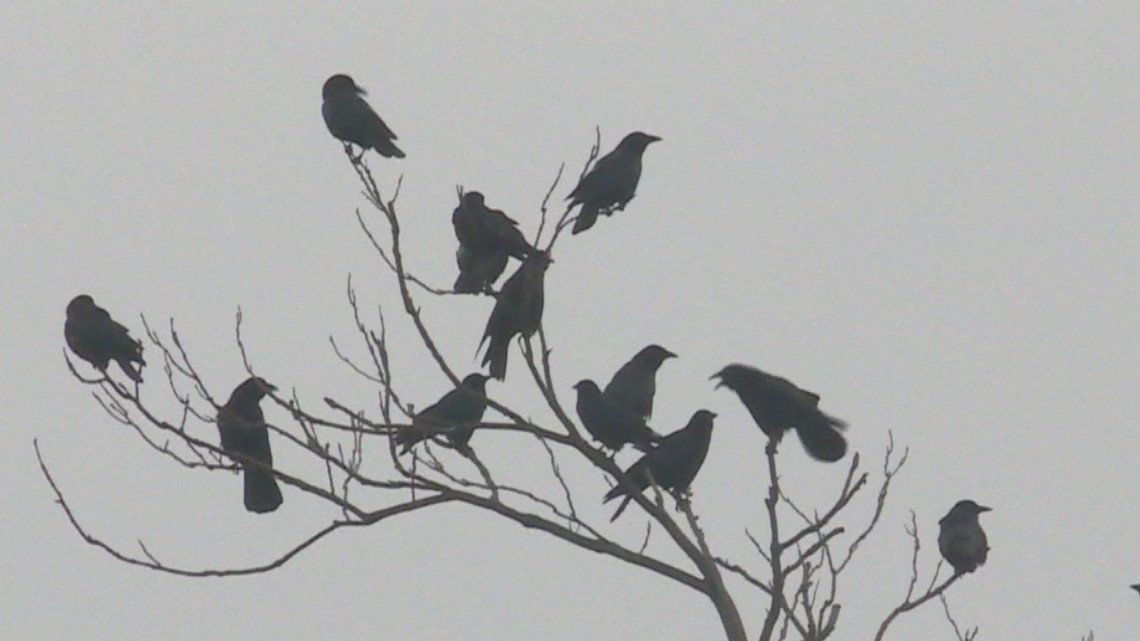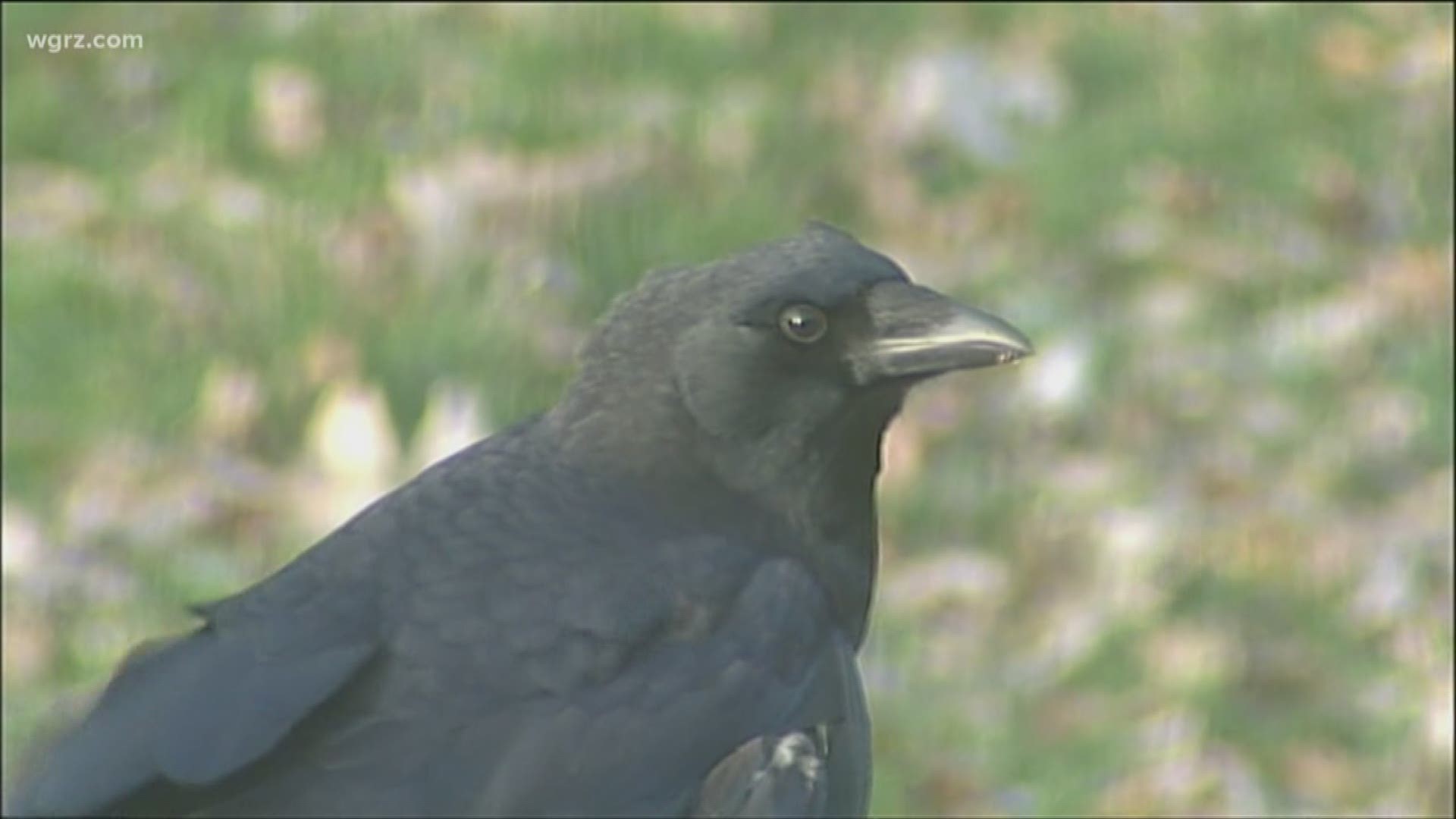BUFFALO, N.Y. — Winter takes a toll on all living creatures and those that adapt stand the best chances of survival. Crows, being among the planet's smartest animals, have made relatively recent adaptations to help them weather the winter.
Kevin McGowan is an ornithologist with Cornell Lab of Ornithology. He has studied Crows for three decades.
"Crows have always been getting together in large numbers in the winter to roost together," McGowan said. "But up until the 90s, 80s or 90s, it was always outside of town, and now they've started to move into urban areas all across the east and the midwest."
The birds can form large roosts in the tens of thousands. For years, cities across New York State have been dealing with large winter flocks.
McGowan says in other parts of the nation, the numbers are staggering.
"Most of the roosts around in the smaller cities," McGowan said. "Mid-cities are somewhere in the 10 to 20 to 30,000. The Auburn one has been up to about 100,000, maybe 75 to 100,000 birds. I think that's probably one of the larger roosts around upstate New York, there are a number of them.
"They get into these monstrous roosts in Oklahoma and Nebraska, the largest one that was accurately counted or carefully counted was 2 million crows," he said.


So why do they behave like this now, especially since in the past they've treated as a nuisance, and should presumably fear man?
"Either we've changed our behavior and have just been nicer to them than we used to be, and so they don't flee from us all the time, or they figured out that they can get in to town and get past the shotgun range, which is what always used to happen to them before," McGowan said.
Flocking in massive numbers may benefit the birds for many reasons. Protection from predators, food-related reasons or social behavior may all influence their behavior. Cities are also warmer in the winter, a big factor in northern climates.
The gathering also seems to have a ritualistic nature about it. About dusk, the crows usually meet up in smaller groups before moving on to the main flock.
"When they start to congregate in these pre-roost gatherings, there's all kinds of cawing going on, they chase each other around, there are all these dramatic acrobatic flights and things like that," McGowan said. "Clearly something social happening."
There is much to learn from observing nature, and that it should involve such intelligent creatures makes it all the more captivating.
"I see new things all the time," McGowan said. "The more you look at something, the closer you look at something, the more fascinating and complex it always is."
RELATED: 2 the Outdoors: The slumber of trees

